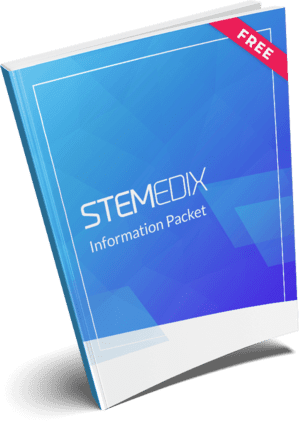
by admin | Feb 15, 2024 | Osteoarthritis, Exosomes, Extracellular Vesicles, Mesenchymal Stem Cells, Stem Cell Research, Stem Cell Therapy
Osteoarthritis (OA) is the most common form of arthritis and is estimated to affect nearly 365 million people worldwide. Characterized as an inflammatory disease, OA slowly progresses over time and results in the gradual loss of the protective cartilage found on the ends of the bones.
While the specific cause of OA has yet to be determined, a growing body of evidence suggests the chondrocyte inflammatory response resulting from elevated levels of pro-inflammatory cytokines is a critical factor in the development and progression of OA.
Recent evidence also suggests that mesenchymal stem cell-derived exomes (MSCs-Exos) exhibit beneficial anti-inflammatory responses in several inflammatory diseases, including OA.
In this study, Wang et al. explore the role of human umbilical cord-derived MSCs-Exos (hUC-MSCs-Exos) in treating the inflammation of chondrocytes and its related mechanisms.
As part of this study, the authors report that supplementing the observed chondrocyte inflammation models with hUC-MSCs-Exos demonstrated the ability to reduce the inflammation of chondrocytes caused by the inflammatory factor IL-1β.
Additionally, activation and polarization of synovial macrophages to M1 phenotypes also contribute to the progression of OS. As part of this study, Wang et al. report that hUC-MSC-Exos demonstrated a protective effect against M1 macrophage-induced chondrocyte damage and cell death.
Wang et al. indicate that the results of this study confirm the anti-inflammatory effects of hUC-MSCs-Exos in the human articular chondrocytes inflammation model. The authors also conclude that hUC-MSCs-Exos may be used as a potential cell-free treatment for chondrocyte inflammation in OA.
Source: Wang S, Jiang W, Lv S, et al. Human umbilical cord mesenchymal stem cells-derived exosomes exert anti-inflammatory effects on osteoarthritis chondrocytes. Aging (Albany NY). 2023;15(18):9544-9560. doi:10.18632/aging.205034

by admin | Feb 8, 2024 | Spinal Cord Injury, Mesenchymal Stem Cells, Stem Cell Research, Stem Cell Therapy
Spinal cord injury is one of the most complicated and serious pathological impairments affecting the central nervous system. Since the human body is unable to regenerate and repair the spinal cord after injury, there is a high likelihood of suffering permanent damage and disability.
Often compounding the issue of SCI, secondary events occurring after the initial injury to the spinal cord significantly reduce cell migration and axonal regrowth and limit repair and regeneration.
Recently, transplantation of mesenchymal stem cells (MSCs) has been shown to promote the repair of injured spinal cord tissues in animal models. However, as Qu and Zhang highlight in this review, there remain many unanswered questions that are essential for improving the effects of this MSC therapy. As such, the authors focus this review on recent information about the behavior and function of MSCs in SCI, the function of biomaterials to direct the behavior of MSCs, and the attempt to emphasize combinational strategies such as tissue engineering for functional improvements of SCI.
There are studies showing that the migratory and homing capacities of MSCs are closely related to their engraftment and regeneration ability. Considering this, the authors highlight the importance of having MSCs migrate and integrate into host spinal cord tissue. Since MSC homing toward injured tissue is not an efficient process, and to ensure a more effective stem cell therapy outcome, it is important that these transplanted cells be introduced in a way that increases the migratory potential of healthy MSCs to the site of injured tissue.
Additionally, while transplanted cells have been identified adjacent to neurons after SCI, the surviving number of grafted and differentiated neurons was too small to be considered to contribute to functional recovery after SCI. However, data suggests that the ability of MSCs to secrete soluble factors or vesicles rather than engrafting and transdifferentiating might serve an important role in SCI repair.
The authors also point to studies that indicate MSC implantation could promote a therapeutic effect and functional recovery in experimental SCI animal models. The authors believe that this is a result of MSCs ability to differentiate into specialized neuronal and glial cell lineages after transplantation. While MSC transplantation has not yet been proven to be an effective and reliable therapy for SCI, additional studies need to be done before the therapy is utilized in clinical applications.
MSCs respond to the local environment in multiple ways and represent the most promising exosomes for neuropathic applications. Qu and Zhang conclude this review by calling for more intensive studies examining the potential benefits of combining MSCs with nerve tissue-engineered scaffolds to direct cell behaviors after SCI, including growth, migration, and differentiation.
Source: “Roles of Mesenchymal Stem Cells in Spinal Cord Injury – Hindawi.” https://www.hindawi.com/journals/sci/2017/5251313/.

by admin | Feb 8, 2024 | Osteoarthritis, Mesenchymal Stem Cells, Stem Cell Research, Stem Cell Therapy
Osteoarthritis (OA) is the most common form of arthritis and occurs as a result of the protective cartilage, found on the ends of the bones, degenerates over time. While OA can occur in any joint, it is most commonly found to occur in the hands, hips, spine, and knee.
An estimated 365 million people worldwide are currently living with some form of knee OA. Although there have been improvements in conventional treatment methods that have shown some benefit, there is no therapy or drug that can prevent or treat the development of OA in the knee.
Recent phase I/II trials using mesenchymal stromal cells (MSCs) derived from bone marrow (BM) and adipose tissue have demonstrated the feasibility, safety, and clinical and structural improvements in focal or diffuse disease.
Considering the findings of these phase I/II trials, Orrego et al. conducted this study to better assess the safety and efficacy of the intra-articular injection of single or repeated umbilical cord-derived (UC) MSCs in knee OA.
The target population of this study was individuals between the ages of 40-65 with symptomatic knee pain for at least 3 months with grade 1-3 Kellgren-Lawrence radiographic changes in the targeted knee, without meniscus rupture.
The authors divided participants of this study into three specific groups, a control group which received intra-articular knee injections of hyaluronic acid (HA) at baseline and 6 months; the MCS-2 group, which received UC-MSCs at baseline and 6 months; and the MSC-1 group, who received UC-MSCs at baseline followed by placebo injection at 6 months.
At the conclusion of this study’s 12 months follow-up period, Orrego et al. found that the group with repeated UC-MSC intra-articular injections, or MCS-2, experienced significant clinical changes in total WOMAC, pain component, and VAS when compared with the control group. The authors also found that only patients in the MSC groups experienced significant amelioration of pain and disability at 6 and 12 months. The authors also reported no safety signals were detected in the experimental groups as compared with the HA controls.
Considering these findings, the authors conclude that the use of MSCs produces anti-inflammatory properties in response to tissue damage or inflammation that demonstrates suppressive effects on the maturation of dendritic cells, macrophages, Natural Killer, and cytotoxic T-lymphocytes.
While these results appear promising, the authors point out that even if all MSC trials report a good safety record and improvements in cartilage quality, the use of autologous cell therapy does come with some limitations. Among these limitations include a dramatic decline of bone precursor cells when these cells are derived from bone marrow. Studies have also shown reduced chondrogenic activity of MSCs in cultures obtained from individuals with advanced forms of OA. For these reasons, and considering the findings in this study, the authors highlight that allogeneic sources of MSCs have been shown to express superior clonogenicity, migration, and paracrine capacities.
The authors conclude that the repeated UC-MSC dose strategy utilized in this study led to a favorable safety profile and improved clinical results for the treatment of long-term pain in knee OA patients.
Source: Jose Matas, Mario Orrego, Diego Amenabar, Catalina Infante, Rafael Tapia-Limonchi, Maria Ignacia Cadiz, Francisca Alcayaga-Miranda, Paz L. González, Emilio Muse, Maroun Khoury, Fernando E. Figueroa, Francisco Espinoza, Umbilical Cord-Derived Mesenchymal Stromal Cells (MSCs) for Knee Osteoarthritis: Repeated MSC Dosing Is Superior to a Single MSC Dose and to Hyaluronic Acid in a Controlled Randomized Phase I/II Trial, Stem Cells Translational Medicine, Volume 8, Issue 3, March 2019, Pages 215–224, https://doi.org/10.1002/sctm.18-0053

by admin | Jan 25, 2024 | Spinal Cord Injury, Mesenchymal Stem Cells, Stem Cell Research, Stem Cell Therapy
Spinal cord injury is a global term used to capture damage to the spinal cord resulting from trauma (typically in the form of car accidents, falls, or work-related injuries) or from disease or degenerative conditions.
Worldwide, it is estimated that up to 500,000 people suffer some type of spinal cord injury (SCI), with most resulting from car accidents, falls, or violence. The World Health Organization reports that people suffering from SCI are between two and five times more likely to die prematurely as a result of this injury.
To date, there have been limited advances in therapeutic treatment or correction related to SCI, with any therapeutic development focused on treatment of SCI-related symptoms as opposed to the condition itself.
In this study, Muthu et al. analyze evidence of the efficacy and safety of mesenchymal stem cell (MSC) therapy in human subjects with traumatic SCI and identify the therapy’s potential for the future management of SCI.
To analyze this evidence, the authors identified and reviewed studies evaluating the efficacy and safety of stem cell therapy for SCI. Specifically, Muthu et al. screened 321 research articles before narrowing this study down to 66 full-text reviews and finally identifying 19 studies that fit the criteria for this review.
These 19 studies involving 670 subjects demonstrated that those in the identified intervention groups showed statistically significant improvement in key measurement criteria, including the American Spine Injury Association (ASIA) impairment scale grade improvement, ASIA sensorimotor score, activities of daily living score, residual urine volume, bladder function, light touch, and pinprick response.
The authors also found that while no significant difference was noted in motor score or activities of daily living scores, and that the intervention group has significant increase in complications, no serious or permanent adverse events were reported.
Considering these findings, Muthu et al.’s analysis establishes the efficacy and safety of MSC transplantation in the specific areas highlighted above (improvements in AIS grade, ASIA sensory score, and bladder function) without major adverse events. The authors also call for further research to better understand standardized dosing, time, route of administration, and source of MSCs used for transplantation.
Source: Muthu S, Jeyaraman M, Gulati A, Arora A. Current evidence on mesenchymal stem cell therapy for traumatic spinal cord injury: systematic review and meta-analysis. Cytotherapy. 2021 Mar;23(3):186-197. doi: 10.1016/j.jcyt.2020.09.007. Epub 2020 Nov 9. PMID: 33183980.

by admin | Jan 18, 2024 | Multiple Sclerosis, Mesenchymal Stem Cells, Stem Cell Research, Stem Cell Therapy
Multiple sclerosis (MS) is a progressive autoimmune disease that affects the brain, spinal cord, and central nervous system (CNS). Affecting an estimated 3 million people worldwide, MS is typically characterized by an autoimmune response that results in inflammation, demyelination, and degeneration of axons.
Most patients who are diagnosed with MS demonstrate a disease progression characterized by periods of relapse and remission that can last for an extended duration.
There is no treatment that can yet address the various rates of MS progression. Additionally, current therapeutic approaches are designed to address the shortening of the duration of recovery following an attack, mitigating the progression of the disease, and attenuating the symptoms associated with MS.
Recently, mesenchymal stem cells (MSCs) have shown various ranges of effectiveness when used for treatment of autoimmune diseases in clinical trials. However, most of the trials utilizing MSCs for this purpose have been reported for a variety of reasons, including a low number of treated subjects, different doses used in the studies, the feasibility of autologous or allogeneic transplantation, and the unclear therapeutic window after the treatment effect.
Considering this, the purpose of Islam et al.’s systematic review and meta-analysis (SRMA) was to provide a comprehensive assessment of the effectiveness and safety of MSC therapy in individuals diagnosed with MS. To achieve this, the authors identified studies that reported on the efficacy and safety of MSC therapy in human patients with MS based on the changes in the Expanded Disability Status Scale (EDSS) score from baseline to follow-up period. This screening process resulted in a total of 30 studies being incorporated into the systematic review and 22 studies being included in the subsequent meta-analysis.
Islam et al. reported that, following MSC therapy, it was observed that 40.4% of the patients with MS experienced improvement; 32.8% of patients remained stable while 18.1% experienced a worsening of their condition. In terms of the safety of MSC therapy, the authors reported that while no major complications were observed, headaches (57.6%), fever (53.1%), urinary tract infections (23.9%), and respiratory tract infections (7.9%) were the most commonly reported adverse events.
While further research, the development of new technology, optimization of MSC doses, and larger clinical trials are needed to fully evaluate the use of MSC therapy in the treatment of MS, the authors conclude that the results of this SRMA indicate that MSC therapy seems to be an efficacious therapeutic strategy for treating patients with MS.
Source: Islam MA, Alam SS, Kundu S, Ahmed S, Sultana S, Patar A, Hossan T. Mesenchymal Stem Cell Therapy in Multiple Sclerosis: A Systematic Review and Meta-Analysis. Journal of Clinical Medicine. 2023; 12(19):6311. https://doi.org/10.3390/jcm12196311
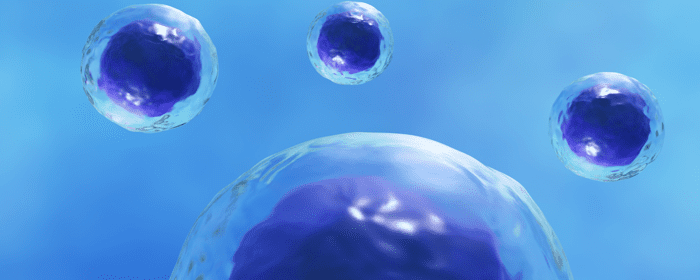


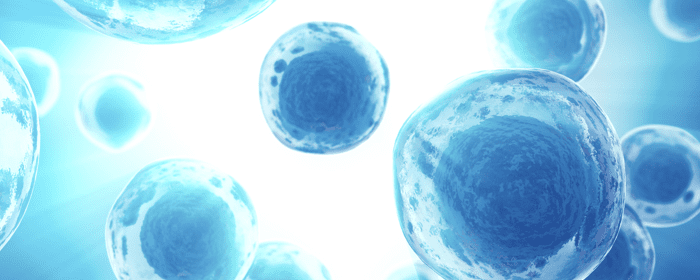
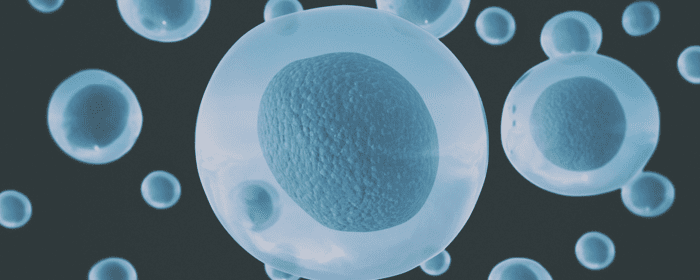
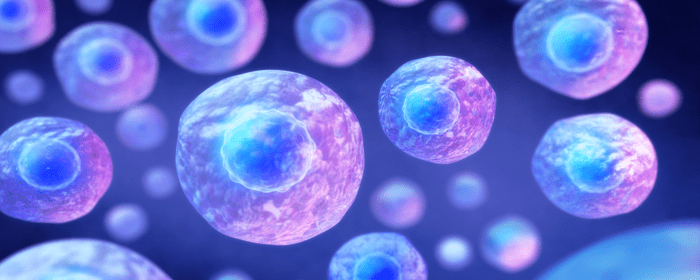
 St. Petersburg, Florida
St. Petersburg, Florida
